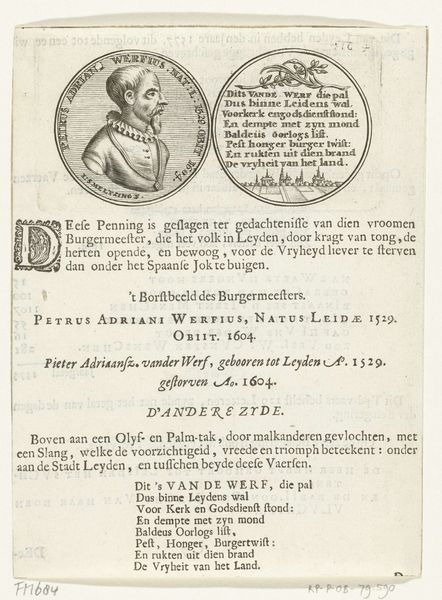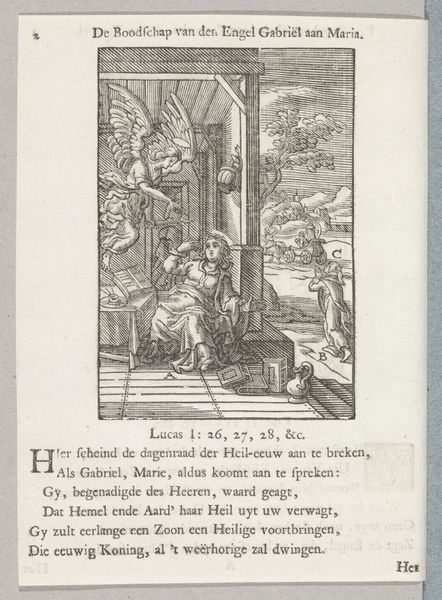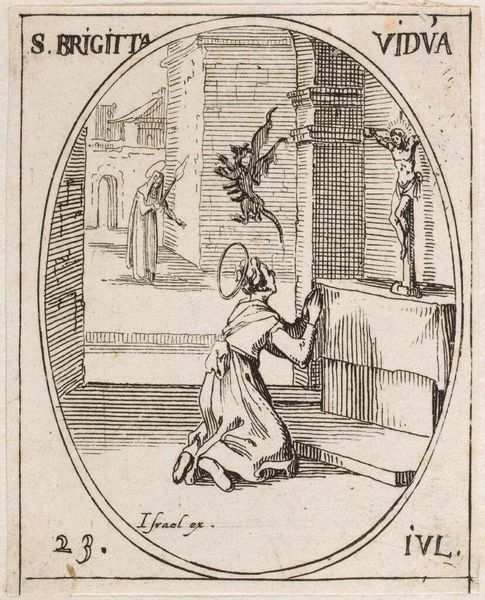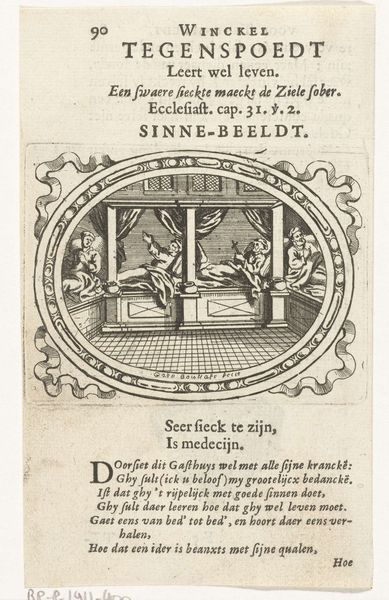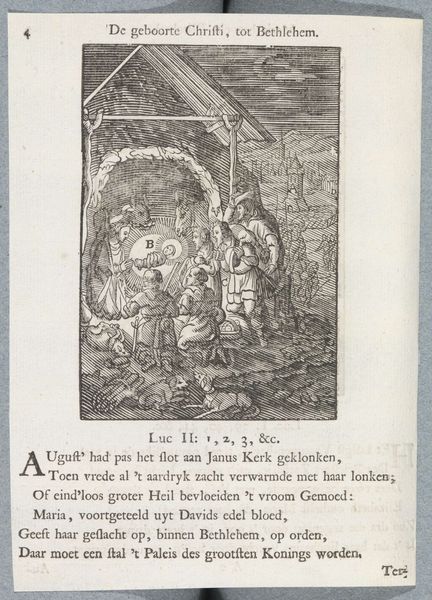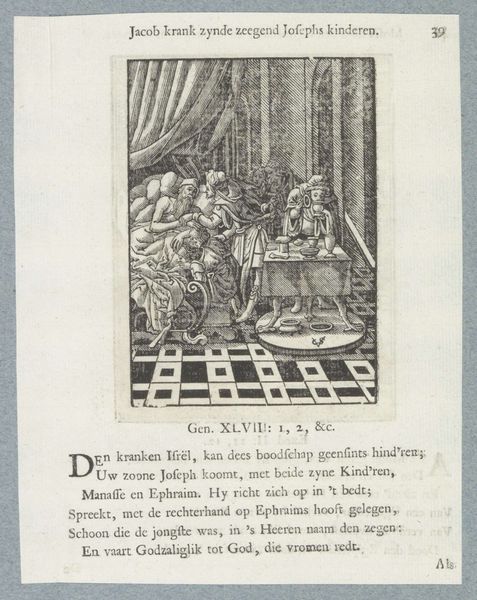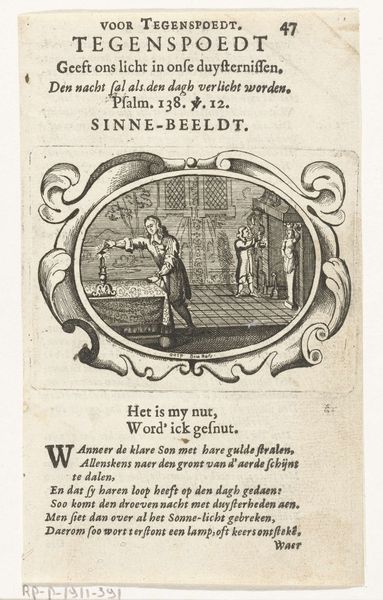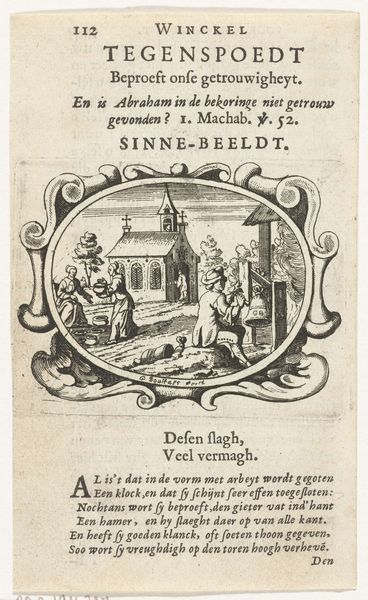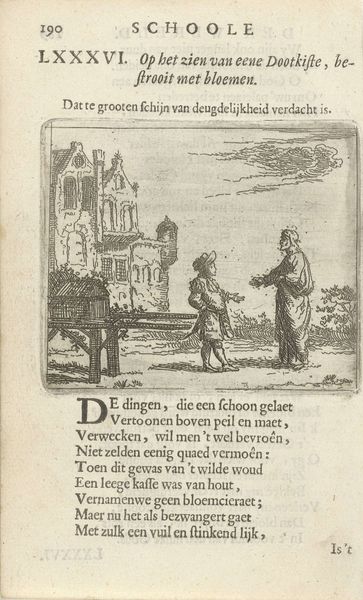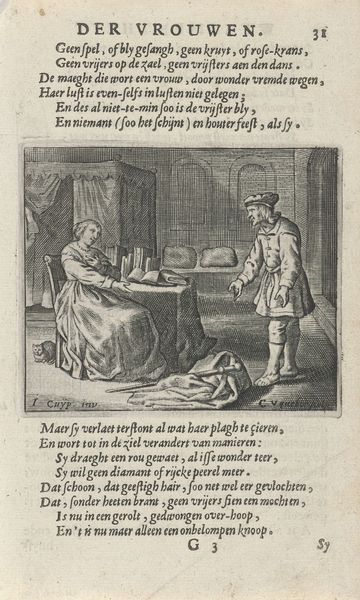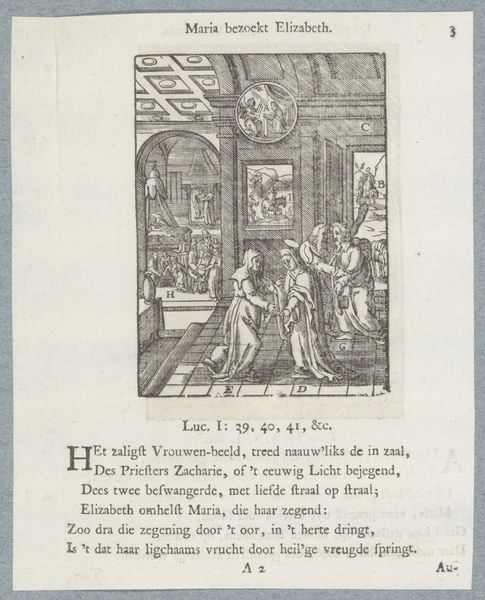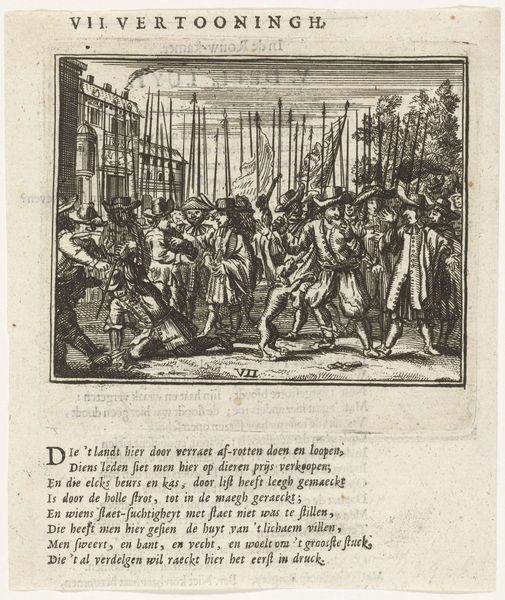
drawing, print, etching, intaglio, engraving
#
portrait
#
drawing
#
baroque
# print
#
etching
#
intaglio
#
line
#
history-painting
#
engraving
Dimensions: height 90 mm, width 55 mm
Copyright: Rijks Museum: Open Domain
Curator: Ah, yes, here we have Stefano della Bella’s "Penelope," an etching and engraving likely created sometime between 1620 and 1664. Editor: There’s such quiet resignation in her posture. All those meticulous lines...it almost feels claustrophobic, despite the apparent openness. Curator: It’s the story of Penelope, from Homer's "Odyssey." You know, the queen of Ithaca, weaving her shroud for Odysseus’s father, Laertes, promising to choose a suitor when it was done...but then unraveling it each night to delay the decision and remain faithful to her long-lost husband. Editor: The loom itself seems to take on almost a mythic quality! It's less of a functional object, more like an implement for spinning destiny, endlessly delaying fate! The way it's drawn, so ornate, speaks of a ritualized action, doesn't it? Curator: Indeed. She becomes an emblem of faithfulness and patience but also of cunning. That perpetual weaving and unweaving, a daily performance of hope and despair...It echoes ideas that were topical at the time – constant activity as virtuous when loyalty or hope of action seem futile. Editor: I find it profoundly sad, in a way that's almost delicious. She's bound to this act. Does she ever get to live? I keep wondering about that chair - almost looks like a lyre or the framework for one, set down on its side like an old myth left to age... Curator: Symbolically it reflects an abandonment of harmonic pursuits that instead find echo in repetitive motions. An instrument becomes the setting for inaction and patient hope! Editor: And yet, by choosing inaction, she defines herself. Perhaps there is some action even in restraint? Curator: You've touched on it. I find it very powerful; perhaps there's agency, if only through the subversion of action itself. Penelope makes her existence resonate and re-define our expectations. Editor: A single, delicate line reminding us that resilience, perhaps, looks most beautiful when tinged with melancholic understanding. Curator: It leaves us reflecting on how such ancient stories continue to speak profoundly.
Comments
No comments
Be the first to comment and join the conversation on the ultimate creative platform.
